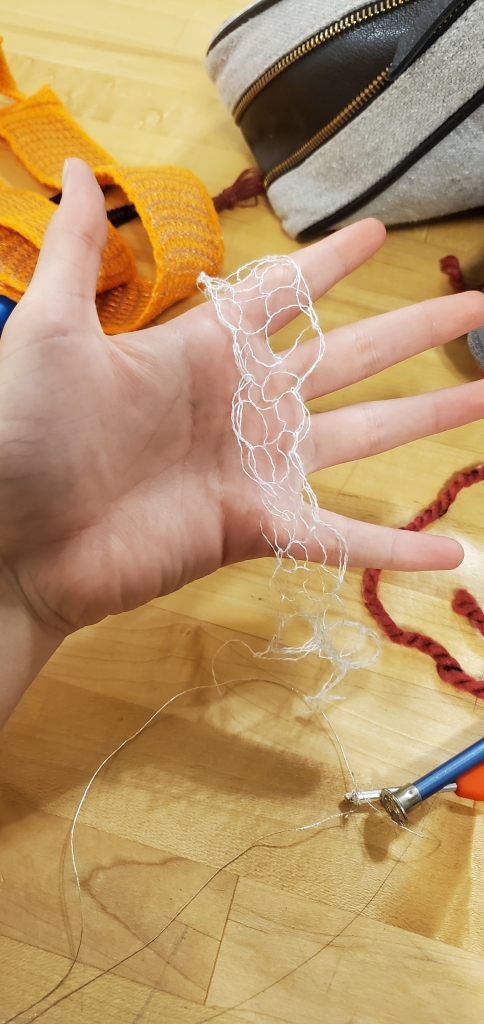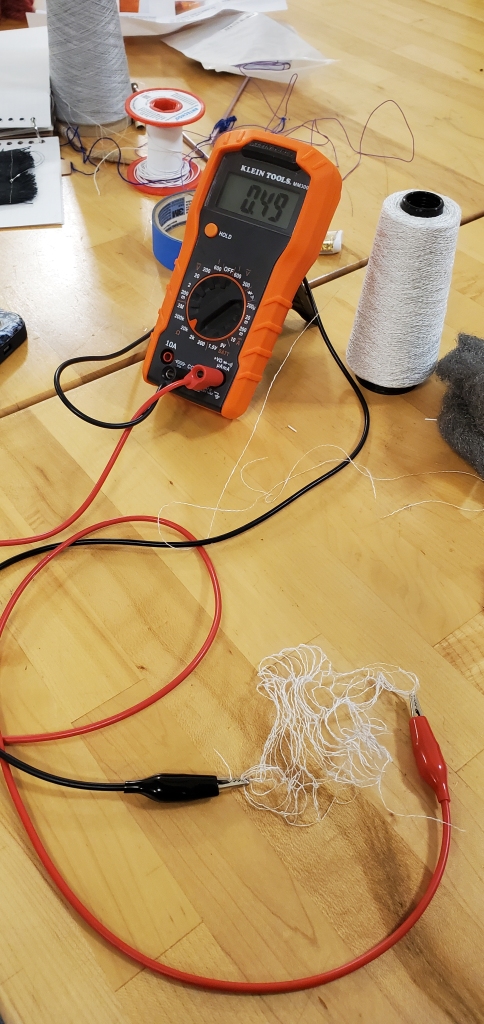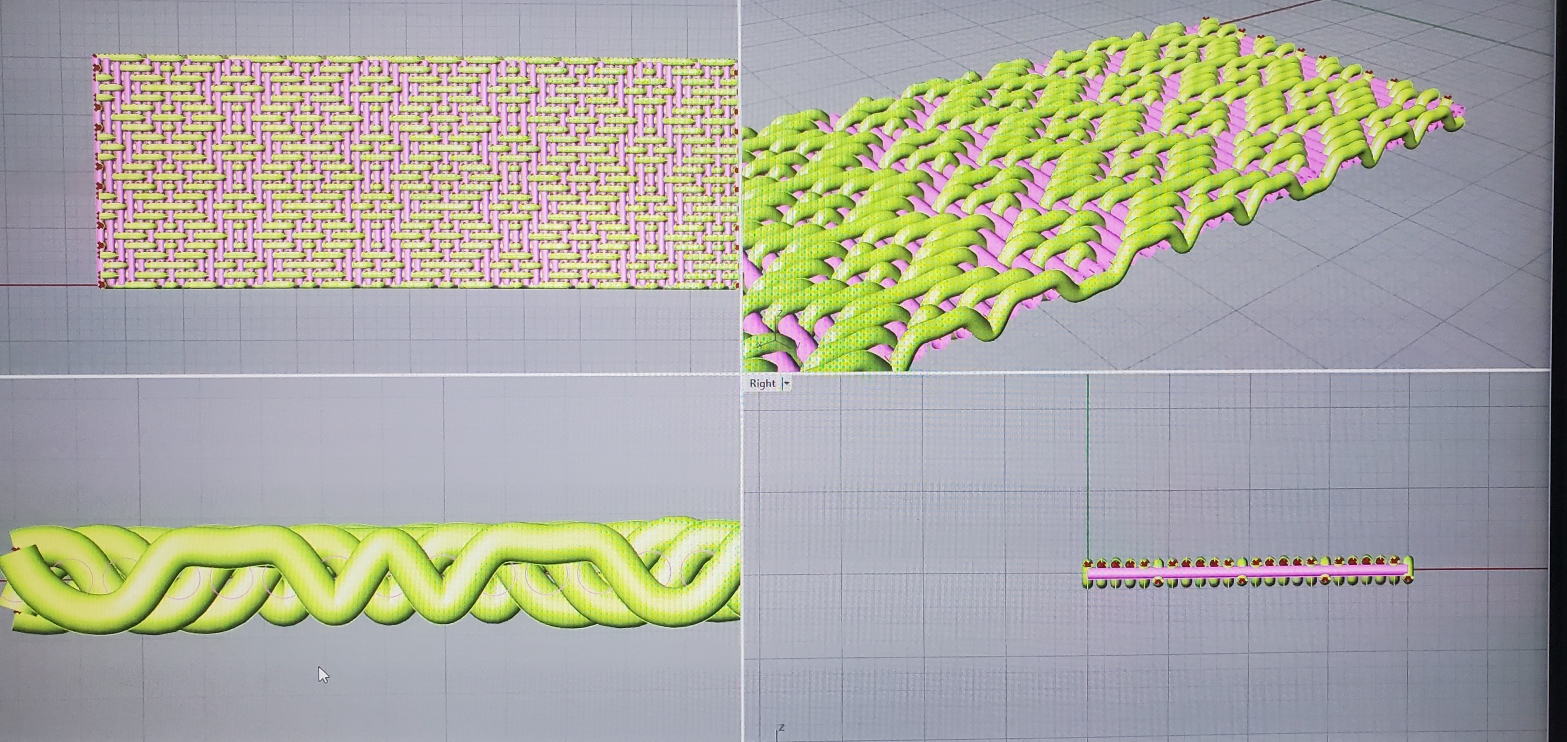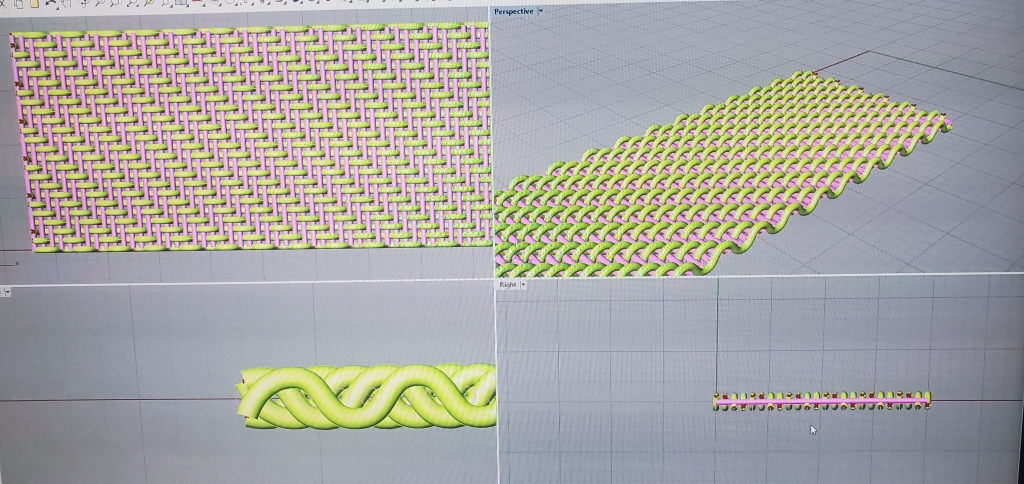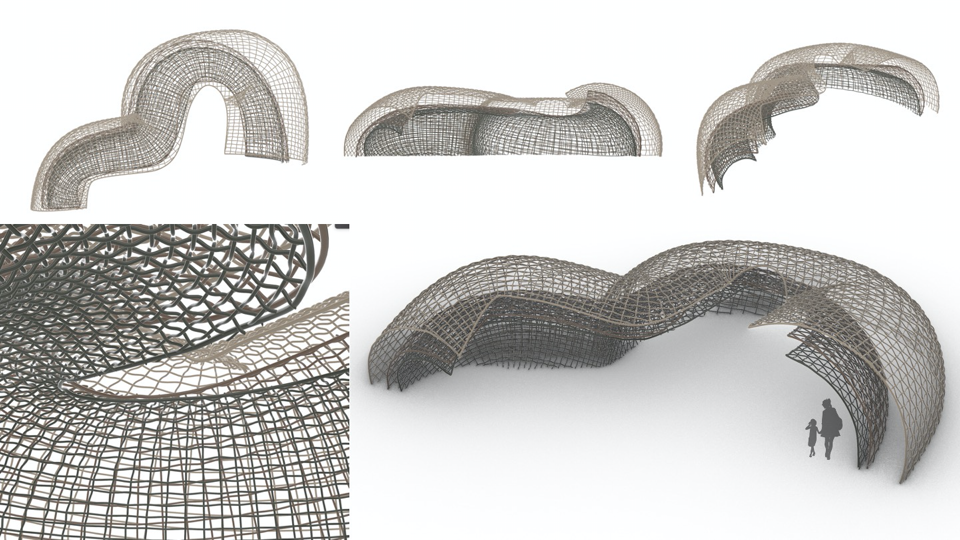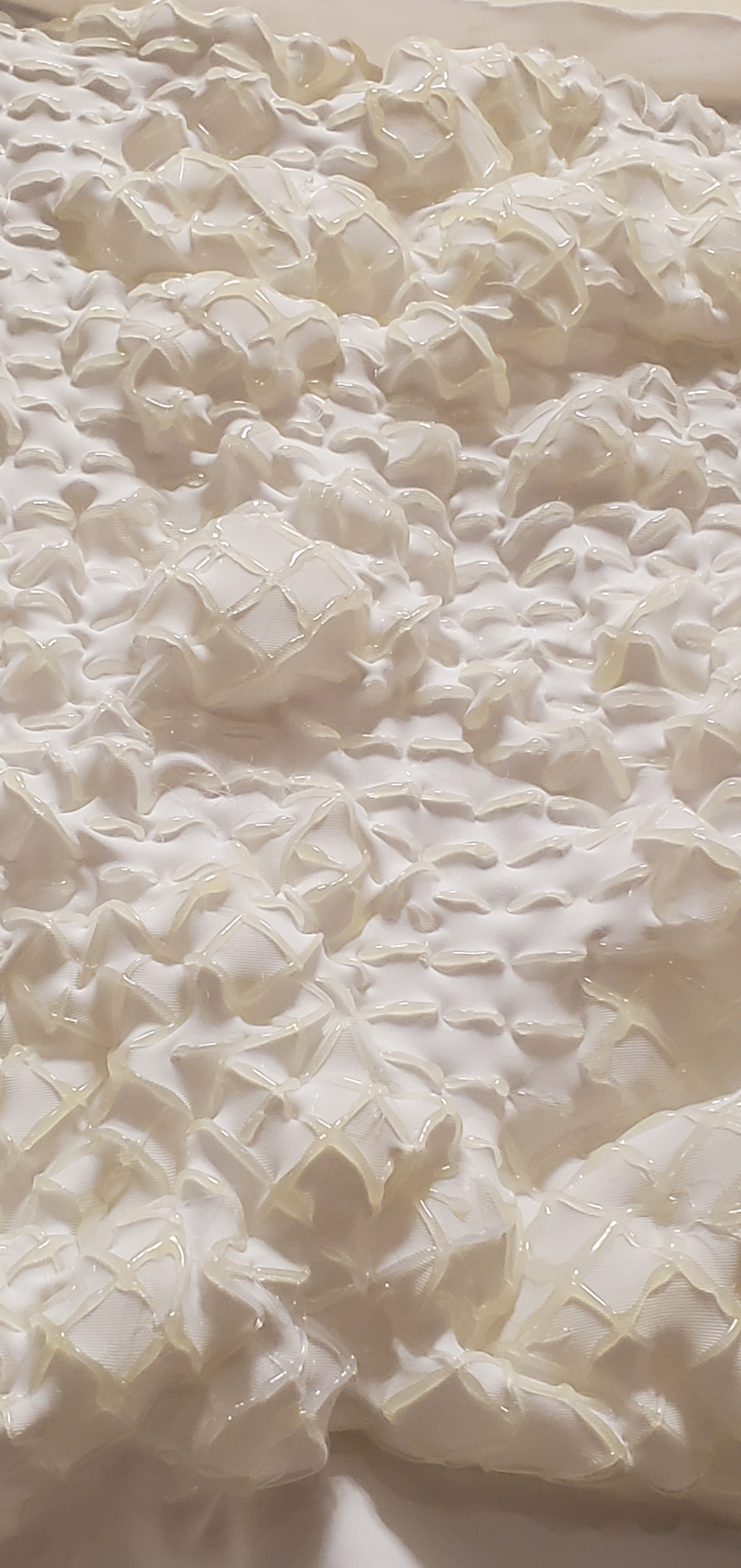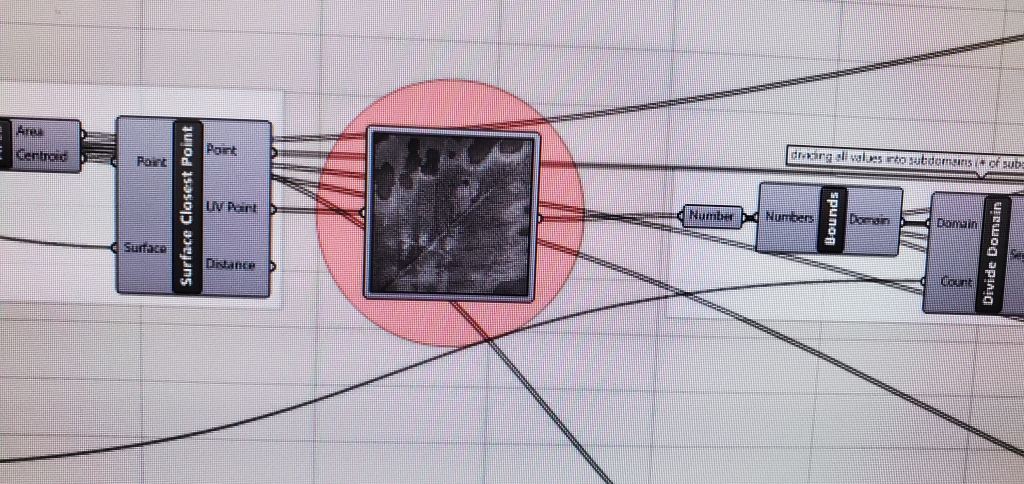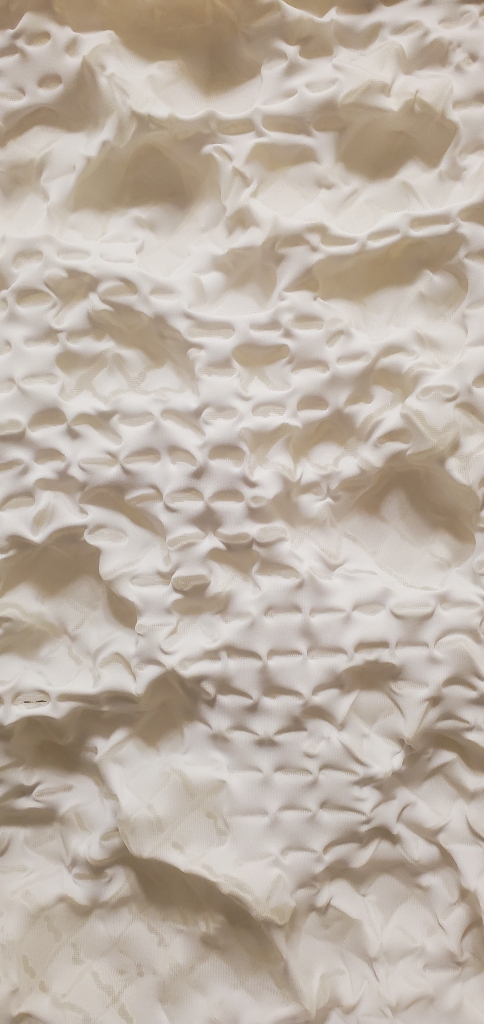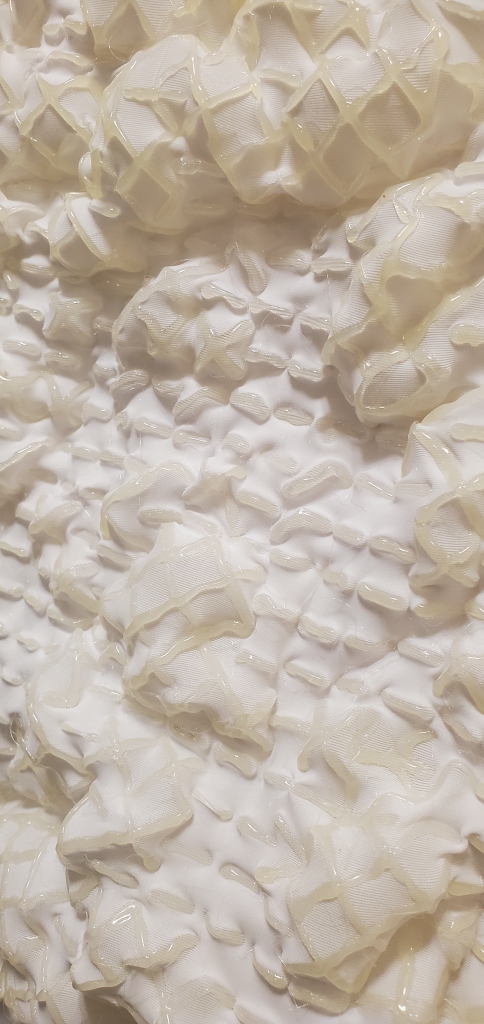
Finally getting to use the TC-2, we began to weave the two designs we created last week using ADACAD. The whole class’s designs were placed side by side on the file given to the TC-2, allowing us to weave them all at once.
It was really interesting to work through this process. The weaving was much more tricky than I expecting, the shuttle kept getting stuck mid-way through, it definitely took some practice to get the hang of how hard to push it across. It also took much longer than I was expecting, but was really worth it after seeing the final product.

After we were done weaving, we cut the designs apart. The weaving on the left was woven with conductive thread and therefore needed its sides sewn with more conductive thread to re-connect the severed lines for a complete circuit.
While waiting for the weavings to be completed, I used some conductive thread to do some finger weaving. I thought it would be interesting to test the electrical resistance because the structure dramatically changes when stretched. I crocheted the finger weaving after testing its original state.
The finger weaving’s resistance in its expanded state tested out to .49 Ohms. It halved its resistance when stretched, coming out to .24 Ohms. Interestingly, crocheting it brought it back to .43 Ohms, almost as much as its expanded state.



